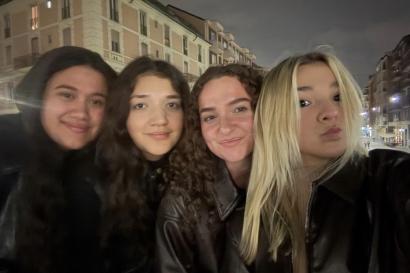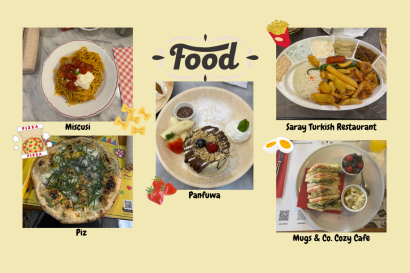It is officially my last week in Milan, and I am reluctant to accept May 10th as a definitive conclusion to this amazing experience. Prior to leaving for Milan, I wasn’t sure of what to expect of my time abroad. My entire life I had grown up with the belief that someday, sometime, I would spend part of my college years in a different country, but I never thought of what that would concretely entail. Even after signing an agreement with IES Abroad, purchasing a plane ticket, and walking through the door of Via Federico Ozanam 8, Milan did not seem like it was my reality. Yet after approximately four months here, I can’t imagine saying goodbye to a place that has been such a wonderful home and given me memories for a lifetime. I can understand why some people would be hesitant to study abroad—as much as a semester in a foreign country offers, it also requires sacrificing a semester at home with lifelong friends, neighborhood haunts, and familiar foods and languages. However, after my time here, I would encourage ANYONE to take a chance on this opportunity, as it is absolutely life-changing: I will walk away with assertiveness, confidence, language skills, and friends that I could not have gained by staying at home. To honor my learnings here, as well as the city of Milan, below is a guide for any prospective student who is considering Milan and what they should know about living in this amazing city.
Transportation: Accessibility here is phenomenal. Individuals under 26 have access to a metro card for 22 Euros per month that allows unlimited travel to any metro stop on the Red, Green, Yellow and Purple metro lines and any tram/bus stop. If you lose your card, you may purchase another one or purchase individual/day/week passes for prices varying from 1.50 forward. On weekdays, the metro runs until 12:30 a.m. and on weekends until 1 a.m. When the metros close, trams and buses run throughout the night through most locations within the city. Moreover, Milan is a very walk- and bike-friendly city, and the walk time between most metro stops is between 7-20 minutes.
Food/Drink: Eating culture is one of the most striking differences between Milan and America. Breakfast consists of croissants, cookies, breads, and pastries; eggs and meats are hard to come by. Moreover, espressos and cappuccinos, the most common breakfast drinks, are mostly consumed in cafés and not to go, and are very small. Dinners are eaten far later, typically beginning around 8 p.m. and going as late as 10:30 or 11 p.m. One of the best parts of life in Milan are aperitivos. From approximately 7-11 p.m., most restaurants, bars, and cafes put out a spread of food including breads, pastas, meats, and desserts that are unlimited with the purchase of a 9-12 euro drink. Aperitivos are a cheap and filling alternative to more expensive dinners, though most trattorias and ristorantes serve main dishes that cost between 13-22 euros. For drinking, hard alcohol is definitely not as much a part of life here as it is in the states. Though it is available in cocktails at bars and for purchase in grocery stores, most Italians do not drink hard alcohol often, in excess, or for drinking games or pre-gaming like Americans do. The best clubs for students in Milan are Dirty Mondays on Mondays, Old Fashioned on Wednesdays, Alcatraz on Friday/Saturday, and Just Cavalli on weekends. There are few 24-hour stores available for late-night food (like gas stations or drive-throughs), though most restaurants and bars are open as late as 3 a.m. Grocery stores are far smaller, have fewer product choices than Americans are used to, and require a lot more patience—in all Italian stores, you are required to weigh and tag your own produce, which is then scanned at the register.
Travel: Travel CAN be as cheap as RyanAir proclaims, but only in certain circumstances. Travel is cheapest during midweek, if you can afford to take class off, or if booked in advance. If booking in advance is not possible or you want to fly spontaneously, use Google flights or Skyscanner to check availability days before you intend to leave. The cheapest flights typically arrive and depart early morning. Within Italy, there is also a vast network of trains that can take you to destinations in as short as 40 minutes (Lake Como), 2.5 hours (Florence) and five hours (Nice, France) from Centrale Station. Bus tickets through Flixbus are also affordable and good for last-minute booking. Milan has three airports: Malpensa, Bergamo, and Linate. Malpensa is most popular for international flights and is accessible via the Malpensa Express (a 40-minute ride that costs 13 euro each way) or an hour-long, eight-euro bus ticket. Bergamo and Linate are accessible via bus routes.
Communication: SIM cards are popularly available at Vodafone, TIM, and Wind stores, with plans on a charge-by-month basis and costs as low as 20 euro per month. Italians primarily communicate through the platform Whatspp, including teachers. Several millennials and some older people who work in retail or the food industry speak English, though there is far less English in Milan than in typical tourist spots such as Rome, Venice, and Florence. While most Milanese appreciate attempts at speaking Italian or polite English speakers in general, it is likely there will be occasions in which Milanese people offer poor service or treat you differently because you do not speak the language. Important phrases to know include, Non parlo Italiano molto bene (I don’t speak Italian very well); Sono americano/a (I am American); Dove il metro/bagno? (Where is the metro/bathroom); Quanto costa? (How much does it cost?); Per favore/Grazie/Scusa (Please, Thank you, Excuse Me).
Fashion: Far dressier than American culture. Athletic wear is frowned upon, as are flip flops, sweats, Greek life sweatshirts and shirts, ripped jeans, and typical going-out attire for girls (i.e. crop tops). Italians look well-dressed and refined for all occasions, at any time of day, and even simple tasks like grocery shopping require a bit of polishing up.
Miscellaneous/Culture: No tipping; slow restaurant/café/bar/grocery store service; definitive experience of seasons (winter will require a thick down jacket; early spring means heavy pollen; spring/summer will require short sleeves); always lock doors even if you live in a “safe area”; few English-speaking cinemas; cash and exact change is always preferred; gyms are not popular; Italians are very energy-conservative: most public places and apartments have strict requirements about the use of heat and AC, water pressure is not as strong, dryers are rare, and there are strict fines for not disposing of trash properly; some Netflix shows are not available/TV platforms such as HBO are only accessible through the use of a VPN.

Jordan Kurtz
<p class="MsoBodyText" style="margin-top:.4pt; margin-right:15.35pt; margin-bottom:.0001pt; margin-left:5.5pt"><span style="line-height:103%">I became a Psychology major by accident at Southern Methodist University in Dallas, and now I have never been more certain that becoming a private practice therapist is what I was called to do in life. I also love to write, and am working on getting a short story of mine published with my creative writing professor. When I'm not reading or writing I love to hike and be outdoors too- I'm from Seattle and wish Dallas had a bit more rain and mountains, but I make do in Dallas with the BBQ.</span></p>









